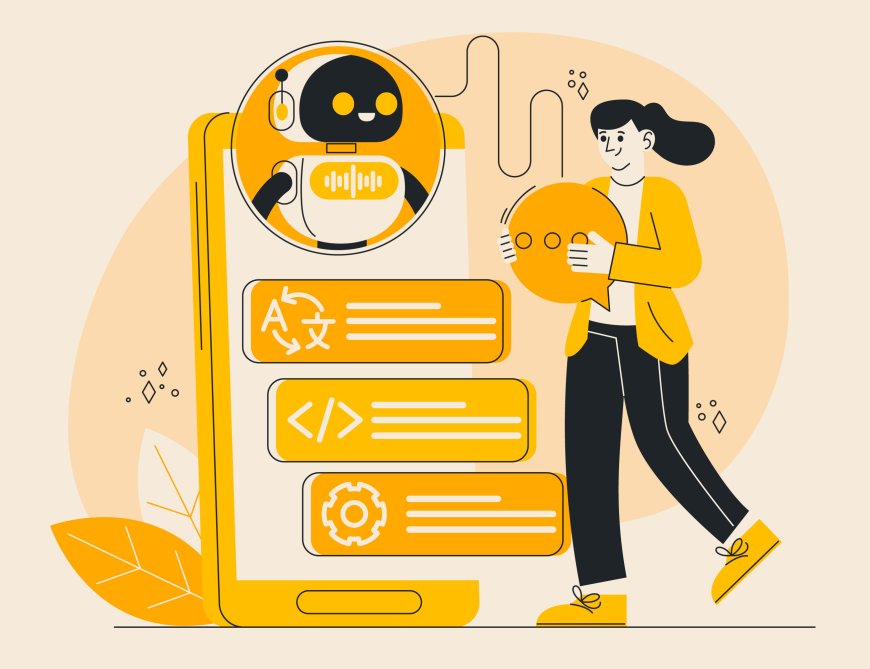Adaptive AI Development: Redefining Personalization in Digital Products
Discover how adaptive AI is transforming digital products by delivering hyper-personalized user experiences. Explore cutting-edge developments in AI-driven customization.

In todays hyper-connected world, digital products are no longer expected to be static tools; they must act as dynamic companions that evolve alongside user needs. The days of generic user experiences are quickly fading, replaced by deeply personalized, intuitive interactions. At the heart of this revolution lies Adaptive Artificial Intelligence (AI)an emerging frontier that is redefining personalization across digital landscapes.
What is Adaptive AI?
Adaptive AI refers to systems that can adjust their behavior and learning algorithms based on real-time data, feedback, and changing environmental conditions. Unlike traditional AI models, which are trained once and deployed as static systems, adaptive AI continues learning after deployment, constantly evolving based on user interactions, contextual data, and even new business objectives.
This adaptability makes these systems particularly well-suited for digital products aiming to deliver personalized, context-aware experienceswhether its a shopping app, an educational platform, a health tracker, or an enterprise dashboard.
The Limitations of Traditional Personalization
Before exploring the impact of adaptive AI, its worth understanding the constraints of legacy personalization approaches. Historically, digital products have relied on rule-based engines, static user profiles, or segment-based marketing to "personalize" experiences. These systems:
-
Operate on predefined logic that fails to adjust dynamically
-
Group users into broad categories instead of treating them as individuals
-
Lack real-time feedback loops, making personalization slow and reactive
As users demand smarter, more empathetic interfaces, these rigid systems fall short. Adaptive AI addresses this gap by infusing intelligence that evolves in sync with user behavior and preferences.
How Adaptive AI Enables True Personalization?
Lets explore how adaptive AI revolutionizes personalization through several key capabilities:
1. Real-Time Behavior Analysis
Adaptive AI models continuously monitor user behaviorclick patterns, session durations, preferred content types, navigation flowsand use this data to refine recommendations or interface layouts. This means that if a user starts browsing more health-related content in a news app, the algorithm quickly pivots to surface more of that content, without needing a manual update or retraining cycle.
Example: Spotifys adaptive recommendation engine adjusts dynamically as your listening habits change over days, weeks, or even hours. If you start listening to classical music during work hours, it begins recommending similar genres during that time window.
2. Contextual Awareness
Context matters. Adaptive AI doesnt just consider who the user is but also when, where, and how theyre using the product. By incorporating device usage, location data, time of day, or even emotional tone (e.g., via sentiment analysis), AI models craft a hyper-relevant experience.
Example: A fitness app might recommend different workout routines based on whether you're at home, at the gym, or travelingwithout the user having to manually adjust settings.
3. Continuous Learning and Feedback Loops
Traditional AI systems freeze once deployed. In contrast, adaptive AI thrives on continuous input. Every user interaction becomes a learning moment that sharpens the model's accuracy and relevance. Reinforcement learning and online learning frameworks are often employed here.
Example: E-learning platforms like Duolingo use adaptive learning algorithms that adjust difficulty levels in real time based on how well the learner performs, offering customized content pathways.
4. Cross-Platform Personalization
Adaptive AI enables products to maintain consistent user understanding across multiple platforms. Whether a user interacts via mobile, desktop, or voice assistant, the AI draws from a unified behavior model, ensuring a cohesive and intelligent experience.
Example: Netflix's watch history and recommendations stay consistent whether youre on a smart TV, phone, or laptop, because the underlying adaptive AI tailors experience holistically.
Applications Across Industries
Adaptive AI isnt confined to one verticalits reshaping how personalization is delivered across a wide spectrum of digital products.
Retail and E-commerce
-
Dynamic pricing strategies based on user interest and competitor activity
-
Personalized shopping experiences with adaptive recommendations
-
Chatbots that evolve customer service responses based on conversation history
Healthcare
-
Personalized health advice based on real-time biometric data
-
Mental health apps that adapt interventions based on mood tracking
-
Predictive models that update patient risk scores as new data comes in
Education
-
Curriculum pathways that adapt to each students pace and learning style
-
Real-time feedback and content delivery tailored to current performance
-
Language learning apps with AI tutors that adjust teaching techniques
Finance
-
Investment advice that evolves based on market conditions and user risk appetite
-
Fraud detection models that continuously adapt to new threat vectors
-
Budgeting tools that learn and predict personal spending behavior
Challenges of Adaptive AI Development
Despite its promise, building adaptive AI into digital products is not without obstacles:
1. Data Privacy and Ethics
Adaptive AI requires access to a wealth of user datasome of it sensitive. Ensuring compliance with GDPR, CCPA, and other regulations is essential. Ethical considerations around consent, explainability, and data ownership must also be addressed.
2. Model Drift and Validation
Continuous learning can introduce model drift, where the AI starts producing unreliable results. Its crucial to implement guardrails, such as performance monitoring, human-in-the-loop systems, and version control to maintain trust and safety.
3. Computational Overhead
Real-time learning and contextual decision-making require significant computing power, especially for mobile or IoT-based applications. Efficient model deployment using edge AI, lightweight neural nets, or federated learning can help mitigate these challenges.
4. Design Integration
Personalization must feel natural, not intrusive. UX/UI teams must work closely with AI developers to ensure that adaptive experiences enhance rather than disrupt user engagement.
The Future of Adaptive AI in Digital Products
Looking ahead, adaptive AI is set to become the default expectation in digital experiences rather than a premium feature. Well likely see:
-
Hyper-individualization: No two users will have the same product interface or feature set.
-
Emotionally aware interfaces: Systems that detect and respond to emotional cues, fostering empathy.
-
Autonomous personalization: AI will anticipate needs before the user expresses theme.g., preloading content before the user opens an app based on predicted behavior.
Adaptive AI will also power co-creation tools, where users and AI collaboratively shape content, designs, and decisions in real time, unlocking new creative potential.
Conclusion
In a world where attention is scarce and user expectations are soaring, digital products that fail to evolve risk obsolescence. Adaptive AI Development offers a path to real-time personalizationone that treats users as unique individuals, respects their context, and continuously grows with them.
But its not just about smarter algorithms. Its about building human-centric systems that respond, learn, and adaptnot just to deliver relevance, but to earn trust and foster long-term engagement.
As businesses and developers embrace adaptive AI, the mantra is clear: Personalization is no longer a featureits the product.












































